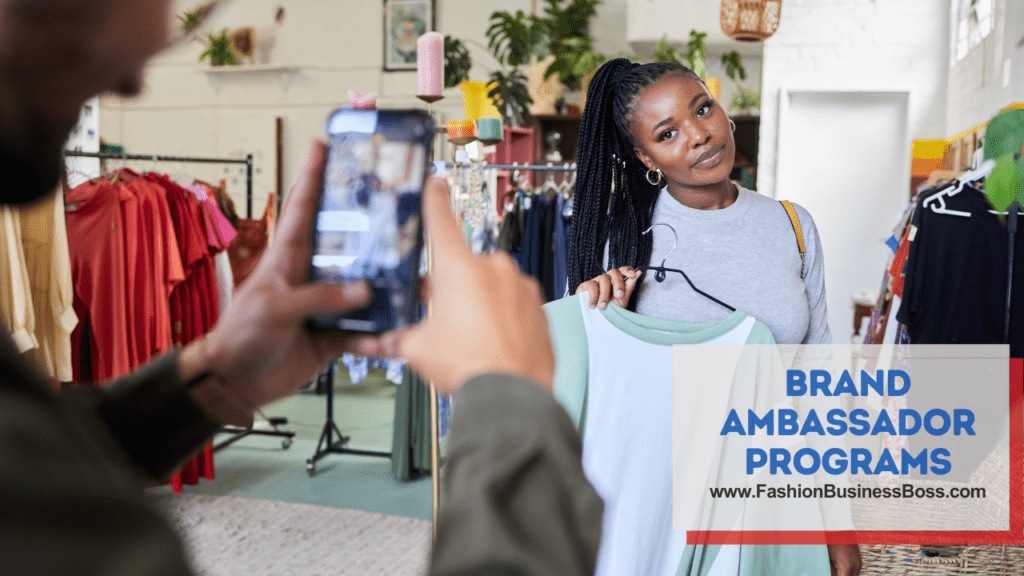Are you passionate about fashion and dream of starting your own clothing company? Do you have a unique vision for apparel that you want to share with the world? If so, you’re in the right place.
To thrive in fashion, consider visual merchandising, inclusive sizing, smart sales, influencer partnerships, events, local eco-production, loyalty rewards, global growth, brand advocates, IP defense, and market analysis. Mind import/export rules.
In this article, we’ll take you through the exciting journey of establishing your own clothing company, from the initial concept to seeing your designs on the racks.
Visual Merchandising

If you plan to have physical retail locations, focus on visual merchandising to create an appealing in-store experience. This includes store layout, product placement, and creating a cohesive brand aesthetic.
Size Range Inclusivity
Diversity and inclusivity are increasingly important in the fashion industry. Offer a wide range of sizes to ensure that your brand is accessible to a broad customer base.
Read more about: Starting a Clothing Line? These T-Shirts Are Key
Sales and Discounts
Consider implementing sales and discount strategies to attract customers during peak shopping seasons. However, be cautious not to devalue your brand by excessive discounting.
Influencer Collaborations
Influencer marketing can help you reach a broader audience. Collaborate with influencers who align with your brand’s values and aesthetic to promote your products.
Fashion Shows and Events
Participate in or host fashion shows and events to showcase your collections. These can generate buzz and attract potential buyers, press, and industry insiders.
Local Manufacturing and Sustainability
Consider the environmental impact of your manufacturing process. Explore options for local or domestic production to reduce your carbon footprint, and promote transparency about your sustainable practices.
Customer Loyalty Programs
Implement customer loyalty programs to reward repeat buyers. This can foster a loyal customer base and drive sales.
Export and Global Expansion
If your brand is effective, think about expanding to international markets. Research export regulations, cultural nuances, and target demographics in different countries.
Brand Ambassador Programs

Develop a brand ambassador program to create brand advocates who can authentically represent and promote your clothing line.
Intellectual Property Enforcement
Regularly monitor and enforce your intellectual property rights to protect your brand against counterfeiting and copyright infringement.
Read more about: Starting from Scratch: How to Begin Your Clothing Brand?
Export and Import Regulations
If you plan to import or export materials or finished products, ensure you are well-versed in international trade regulations to avoid legal issues.
Conclusion
Starting your own clothing company is a thrilling endeavor that combines your love for fashion with entrepreneurship. With a clear vision, research, hard work, and dedication, your dream can become a reality. Remember, the journey may not always be smooth, but your passion and creativity will guide you to a world where your clothing designs adorn the lives of many.
Frequently Asked Questions

Q: What is visual merchandising in the context of a clothing company?
A: Visual merchandising refers to the strategic arrangement of products, store layout, and design to create an attractive and engaging in-store experience for customers.
Q: Why is size range inclusivity important for clothing brands?
A: Size range inclusivity is essential as it ensures that a broader range of customers can find products that fit them, promoting diversity and accessibility.
Q: How can clothing companies effectively implement sales and discount strategies?
A: Effective implementation of sales and discounts involves careful planning to attract customers during peak shopping seasons while avoiding devaluation of the brand through excessive discounting.
To learn more about starting your own clothing business, check out my startup documents here.
Please note that the contents of this blog are for informational and entertainment purposes only and should not be construed as legal advice. Any action taken based on the information provided in this blog is solely at your own risk. Additionally, all images used in this blog are generated under the CC0 license of Creative Commons, which means they are free to use for any purpose without attribution.

Meet Shawn Chun: Entrepreneur and Fashion Business Fan.
I’m a happy individual who happens to be an entrepreneur. I have owned several types of businesses in my life from a coffee shop to an import and export business to an online review business plus a few more and now I create online resources for those interested in starting new ventures. It’s demanding work but I love it. I do it for those passionate about their business and their goals. That’s why when I meet a designer or boutique owner at a craft fair, farmers market, retail location or anywhere else I see myself. I know how hard the struggle is to retain clients, find good employees and keep the business growing all while trying to stay competitive.
That’s why I created Fashion Business Boss: I want to help fashion business owners like you build a thriving business that brings you endless joy and supports your ideal lifestyle.

